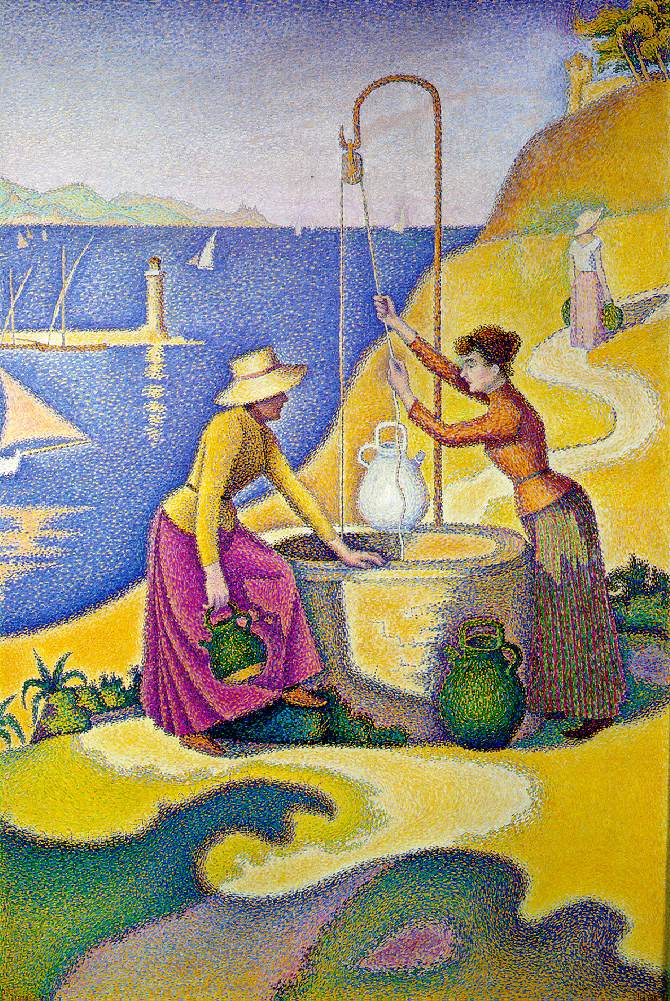log in
Enter site
Login to use Arthive functionality to the maximum
Women at the well
Paul Signac • Painting, 1892, 195×131 cm
Description of the artwork «Women at the well»
“Women at the Well are made of confetti,” was the derogatory assessment of the picture byPaul Gauguin. However, Gauguin was certainly not a “good angel” of Paul Signac. He was the one who once bounced young Paul out from the fourth exhibition of the Impressionists, where he found inspiration making his sketches of Degas. “We don’t copy here!” Gauguin said to the youngster. However, Paul Signac was not at all embarrassed or stopped in his searches.
Signac painted his Women at the Well in the midst of his passion for pointillism (aka divisionism, neo-impressionism), the method of drawing an image using separate points of contrasting pure colours. This work was long and painstaking and, frankly, did not correspond to the temperament and aspirations of Signac. The pointillist method, in his opinion, was ideal for monumental decorative panels. And the founder of the art movement, Georges Seurat, preferred large-scale canvases.
The pointillist period of Paul Signac did not last long, but it undoubtedly had an important influence on his formation. This canvas is decorative. It is noteworthy that even following the neo-impressionistic manner, Signac did not stop time, like Seurat or like he did in his own Breakfast painting. Such categories as time and movement are present here, the woman in the distance is walking. The jug is about to be lowered into the well on a rope, the woman on the left obviously sat down on the well a couple of minutes ago. Signac’s dots create colour and light, make the image especially elegant, but do not deny the category of time as they suggest movement. The unsteadiness of the dotted image by Signac evokes the feeling not of a frozen haze, but of a moving mirage.
He used contrasting colours, the surfaces are painted in solid colours. Signac is a very talented colourist, but he’ll fully reveal it a little later, when he replaces the dot with a smear and stops trying to stay within the framework of the neo-impressionist “scientific approach”. His brush is emotional, not rational (unlike Georges Seurat’s). But the feeling of special lightness and skilful use of colour are already noticeable in this work.
Written by Aliona Esaulova



